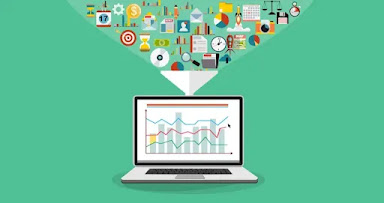The Art and Science of Data Collection: Strategies and Best Practices
Welcome to
today's blog, where we'll embark on a journey into the world of data
collection. In an era driven by data-driven decision-making, the process of
gathering, managing, and analyzing data has become important. Whether you're a
business owner, a researcher, or simply curious about the topic, understanding
the art and science of data collection can be a game-changer. So, let's dive in
and explore the strategies and best practices that can help you harness the power
of data.
Defining Data
Collection
Why Data Collection Matters
Understanding the importance of data collection is
crucial. Here are some compelling reasons:
o Informed Decision-Making: Data-driven
decisions are often more accurate and effective than those based on intuition
alone.
o Performance Improvement: Organizations
can use data to identify areas for improvement and optimize processes.
o Predictive Analysis: Data collection
is the foundation for predictive analytics, which helps anticipate future
trends and outcomes.
o Research Advancement: Researchers
rely on data collection to generate insights and contribute to scientific
knowledge.
Data Collection
Methods
There are various methods for collecting data, each
suited to different scenarios. Here are a few common methods:
· Surveys: Questionnaires or interviews to
gather information from individuals or groups.
·
Observations: Directly
watching and recording behavior or events.
·
Experiments: Controlled
settings where variables are manipulated and measured.
·
Sensor Data: Devices and
sensors collect data automatically, e.g., for climate monitoring or IoT
applications.
Best Practices in
Data Collection
Now that you understand the importance and methods of
data collection, let's explore some best practices to ensure your data
collection efforts are effective and reliable:
·
Define Clear Objectives: Start with a
well-defined research question or objective to guide your data collection
process.
·
Use Valid and Reliable Instruments: If
you're using surveys or measurement tools, ensure they are validated and
reliable.
·
Random Sampling: When dealing
with large populations, use random sampling techniques to avoid bias.
·
Ethical Considerations: Respect privacy
and ethical guidelines when collecting data, especially personal information.
·
Data Quality Control: Implement
checks and procedures to maintain data accuracy and consistency.
·
Data Security: Protect
collected data from unauthorized access and potential breaches.
·
Documentation: Keep detailed
records of your data collection methods, sources, and any changes made during
the process.
Data Collection
Tools and Technology
The digital age has introduced a plethora of tools and
technologies to streamline data
collection. Some popular options include:
Online Survey Platforms: Tools like
SurveyMonkey and Google Forms make it easy to create and distribute surveys.
Data Collection Apps: Mobile apps
designed for specific data collection tasks, such as field research or asset
management.
IoT Sensors: For real-time
data collection in applications like smart cities and industrial monitoring.
Data Management Software: Tools like
Excel, SQL databases, and specialized data management platforms to organize and
store collected data.
Data Collection Challenges
No data collection effort is without its challenges.
Be prepared for:
·
Bias and Sampling Errors: Ensuring your
data accurately represents the population of interest can be tricky.
·
Data Privacy Concerns: Striking the
right balance between data collection and individual privacy can be a delicate
task.
·
Data Security Threats: Protecting your
data from cyberattacks is essential.
·
Data Management: Storing,
organizing, and analyzing large datasets can be overwhelming without the right
tools and skills.
In conclusion, data collection is a vital component of
decision-making, research, and progress across various domains. By following
best practices, leveraging technology, and being mindful of challenges, you can
collect high-quality data that drives insights and positive outcomes. So,
embrace the art and science of data collection, and unlock the potential of
your data.





Comments
Post a Comment